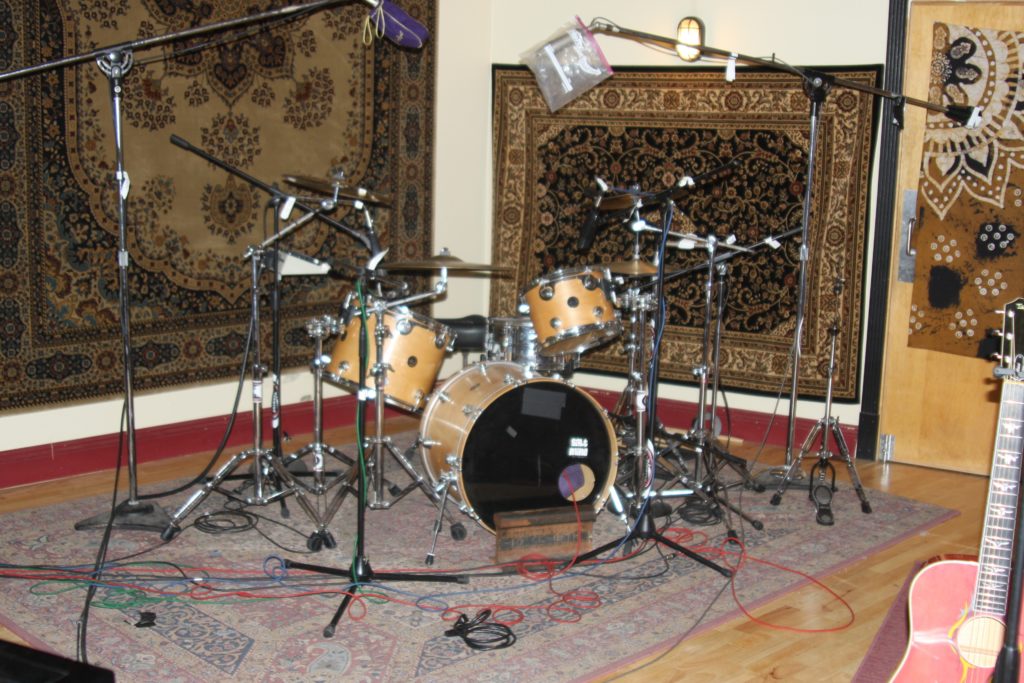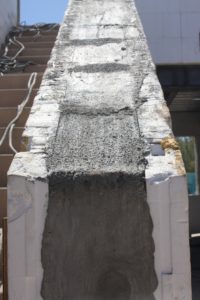This Blog has been updated from it original posting to reflect new information and changes in technology regarding how to soundproof for drums. Updated on 11/26/19.
How to soundproof for drums is all about energy management. Drums produce a lot of energy at many different frequencies. Bass drums can produce energy at 30 Hz. Toms can produce energy starting at 80 cycles and snares fall in between. So, we have an energy-producing device that is capable of large pressure levels (over 100 SPL) covering all frequencies and we are going to take this instrument and place it in a small room and expect the adjective soundproof to apply. Let’s think through this step by step, starting with the largest offender first.
How To Soundproof For Drums – Low Frequencies First
Let’s start with the lowest frequency producing instrument in our trio, the bass drum. The lowest note produced is 30 cycles. A 30 cycle wavelength is about 40′ long. We want this wave to behave itself in a room that has its largest dimension at say 12′. Well, it is not going to behave itself. It is going to want to escape from that room into the next rooms. The energy that does stay will create pressure nodes within the room and excite all resonances that are fundamentals of the 30 cycle wave and the room dimensions.
Tom And Snare
A tom will produce energy at 80 cycles. An 80 Hz. wave is 15′ long. In a 10′ wide room, the wave will travel 10′, strike a wall and the remaining 5′ will rebound back into the room and play havoc with mid-room modal resonances. The middle of the room is not where you want resonances to occur, especially resonances introduced and magnified by a drum that can easily push pressure levels over 100 SPL. How do we manage all of this energy that is squeezed into a tiny box?
Pressure Levels
With a drum room, our first objective is to choose a room that has the necessary volume to support all wavelengths and the pressure levels they will be produced at. A room whose resonance signature can be managed with sound-absorbing technology. We need a room that is at least half wavelength length or width of the lowest frequency that our bass drum is capable of producing. That would be at least 20′ in width and ideally 20′ in length. We know we are going to have resonances because we are in a box, but let us choose our battles wisely and choose a room dimension that can handle the pressure levels produced by drums and produce resonances that we can manage properly. If we choose a room too small, we are continually running uphill in our bass management.
Barrier Technology
Barrier technology must be employed to minimize the drum energy from leaking into other rooms or structures. A double wall approach is best here because of the higher pressure levels, we need to provide a high level of sound transmission loss. A double wall constructed so that each wall is mechanically isolated from the other would be an ideal situation. An air space of at least 4″ between the two structures would be welcome. We must construct a barrier or shell to keep outside energy out of our drum room but more importantly, keep the drum sound in the room.
Middle and High-Frequency Barrier
Low-frequency barrier technology requires mass. Middle and high-frequency noise management in order to soundproof a drum room is a different type with less density and more porosity or openings for airflow to occur across the sound absorption material. With how to soundproof a room for drums we must use both high-density materials and then the material types that allow for airflow in order to absorb middle and high frequencies. How to soundproof a room for drums requires both barrier types but in different amounts.
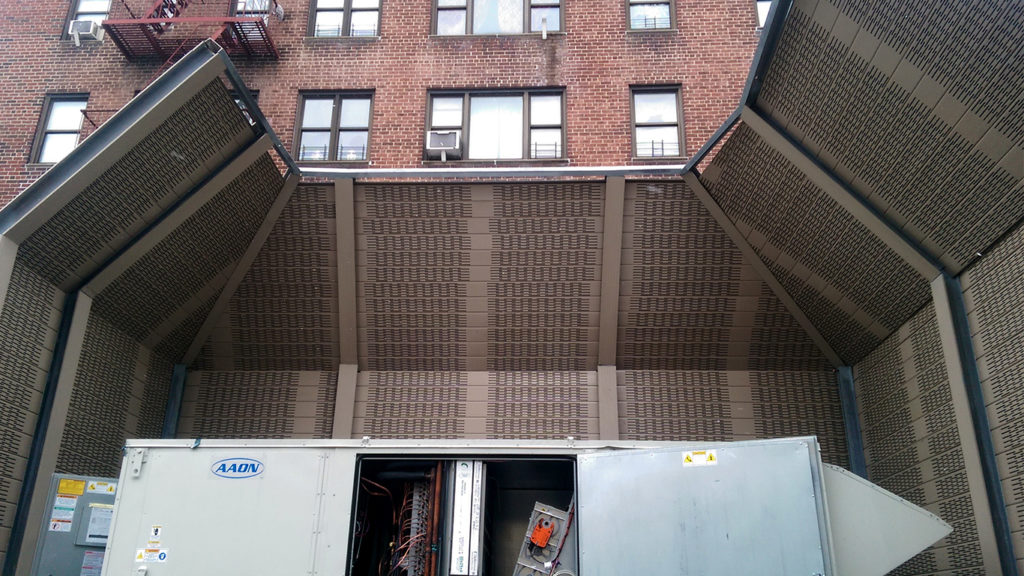
Middle & High Frequency Barrier
Resonant Management
Inside our drum room is all about resonant management. The smaller the room, the more high power absorption is needed. We must find the locations within the room where resonances occur. Once found, we must treat with the proper type and amount of absorption. We must also try and keep microphones from being placed within these resonance pressure nodes. A microphone placed within a room node may receive an exaggerated amount of energy or none at all. We want to try and achieve a room with a flat frequency response below 400 cycles.
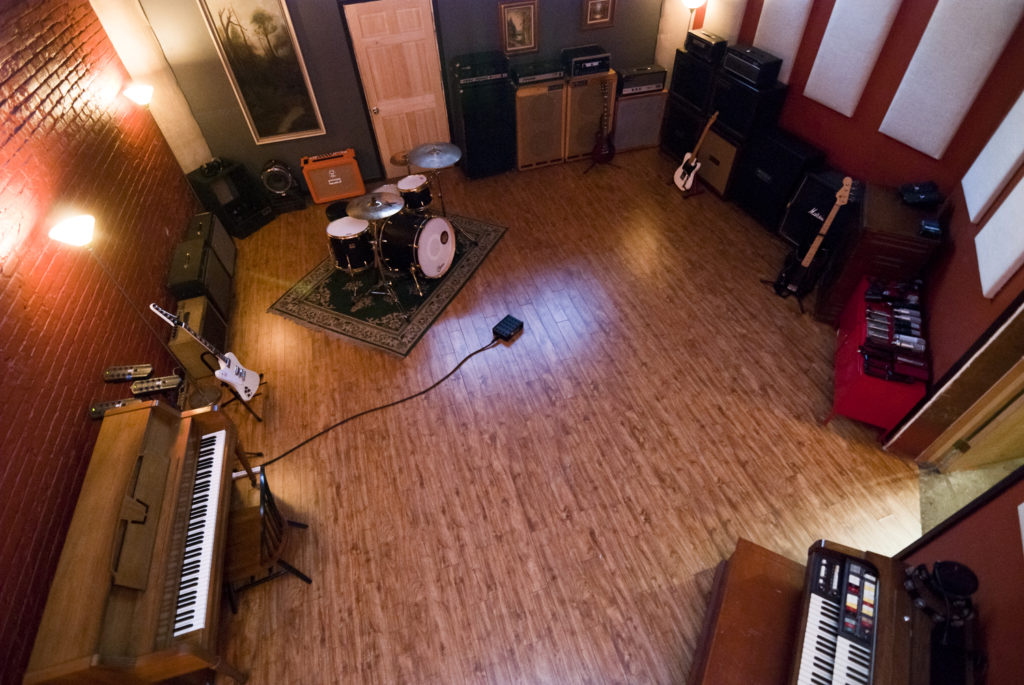
Aerial View of Drum Room
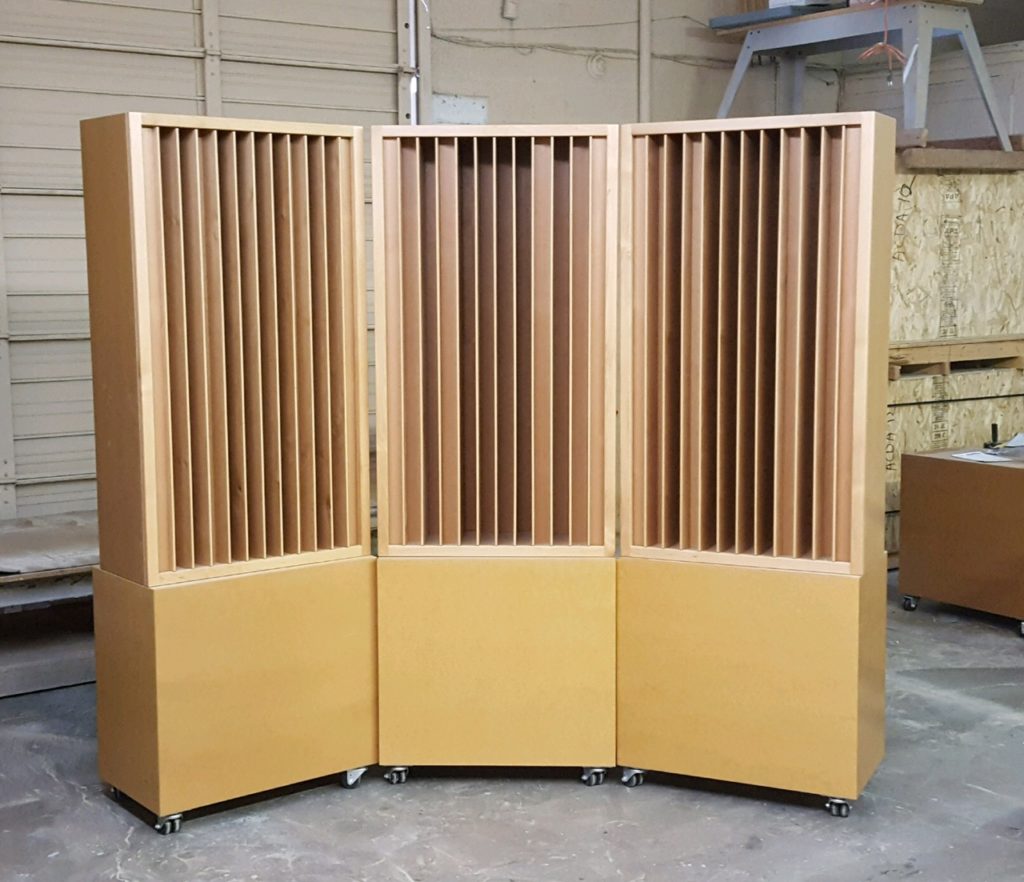
Our Quadratic Diffuser with Base
Middle And High Frequencies
Middle and high-frequency issues within our drum room can be managed using sound absorption or sound diffusion. Sound absorption should be used to control drum room reverberation times. There is much debate on what is a good reverberation time for a drum room. Find a live room that you like the sound of and measure the reverberation time of that room. This procedure will give you a good start point for your room. Another approach is to over absorb and take away absorption technology until you find the right number for you.
Studio Pro Foam: https://www.acousticfields.com/product/acoustic-foam/
Quadratic Diffusion
Diffusion can be used to manage wall reflections within your drum room. Diffusion technology will spread the sound energy out in a fan-like array across two dimensions of sound. Make sure and use quadratic diffusion to aid you in your efforts. Adjust the prime number that works best for your budget and room. A general rule of thumb is to use the highest prime number one has to room for on the drum room’s surfaces.
QD Diffusion Series: https://www.acousticfields.com/product-category/sound-diffusion/qd-series/
In Summary
I hope today’s discussion helps solve the problem you are having. Please message me at info@acousticfields.com if you have any questions as I am always happy to help. If you want more to learn more about room acoustics please sign up for our free acoustic video training series and ebook.
Thanks,
Dennis

